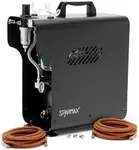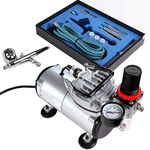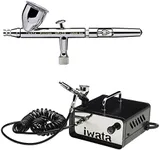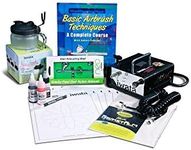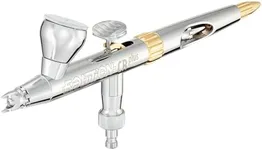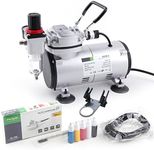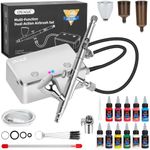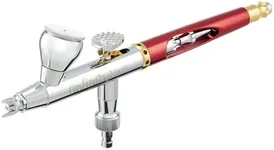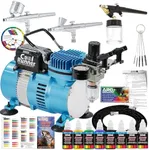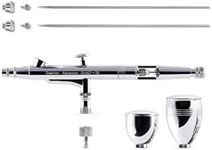Buying Guide for the Best Airbrush Kits
Choosing the right airbrush kit can make a big difference in your creative projects, whether you're painting models, doing makeup, or working on crafts. The best approach is to think about what you'll use the airbrush for most often, as different kits are suited to different tasks. Understanding the main features and how they affect performance will help you find a kit that matches your needs and skill level.Airbrush Type (Single Action vs. Dual Action)The airbrush type refers to how you control the flow of air and paint. Single action airbrushes let you control only the airflow with the trigger, while the paint flow is set separately. Dual action airbrushes allow you to control both air and paint flow with the same trigger, giving you more precision and flexibility. Single action is easier for beginners and simple tasks, while dual action is better for detailed work and more experienced users. Think about your comfort level and the kind of detail you want to achieve when choosing between these types.
Feed Type (Gravity, Siphon, Side)Feed type describes how paint enters the airbrush. Gravity feed airbrushes have a cup on top and use gravity to pull paint into the brush, which works well with lower air pressure and is great for fine detail. Siphon feed airbrushes have a bottle or jar underneath and use suction to draw paint up, making them better for covering larger areas or using more paint at once. Side feed airbrushes have a cup on the side and offer a balance between the two. Choose gravity feed for detail work, siphon feed for bigger projects, and side feed if you want versatility.
Nozzle/Needle SizeThe nozzle or needle size determines how fine or broad the spray pattern will be. Smaller sizes (around 0.2-0.3 mm) are best for fine lines and detail work, while larger sizes (0.4 mm and above) are better for covering larger areas or spraying thicker paints. If you plan to do detailed art or makeup, go for a smaller size. For base coating or larger surfaces, a bigger size is more efficient. Some kits come with multiple sizes for flexibility.
Compressor Type and Pressure RangeThe compressor provides the air needed to spray paint. Key things to look at are whether the compressor is quiet, portable, and what pressure range it offers (measured in PSI). Lower pressure (10-20 PSI) is good for detail and delicate work, while higher pressure (20-40 PSI) is better for broader coverage or thicker paints. If you need to work quietly or move your kit around, look for a compact, low-noise compressor. Match the pressure range to the type of work you plan to do most.
Accessories IncludedAirbrush kits can come with various accessories like extra needles, cleaning tools, hoses, and paint cups. More accessories can make your experience smoother, especially for beginners who may not have these items already. Consider what’s included and whether it matches your needs—if you want to start right away, a kit with cleaning tools and multiple paint cups is helpful. If you already have some accessories, you might not need a fully loaded kit.
Ease of Cleaning and MaintenanceAirbrushes need regular cleaning to work well and last a long time. Some models are easier to take apart and clean than others. If you want a hassle-free experience, look for a kit that’s known for easy maintenance, with simple disassembly and clear instructions. This is especially important if you plan to use different types of paint or switch colors often.



